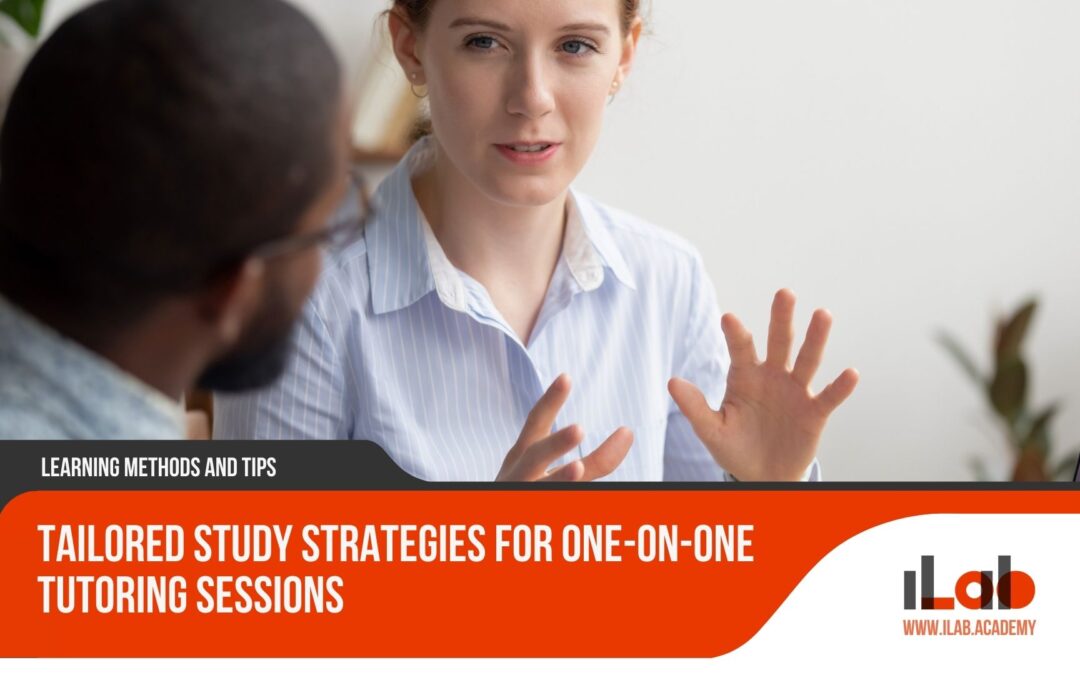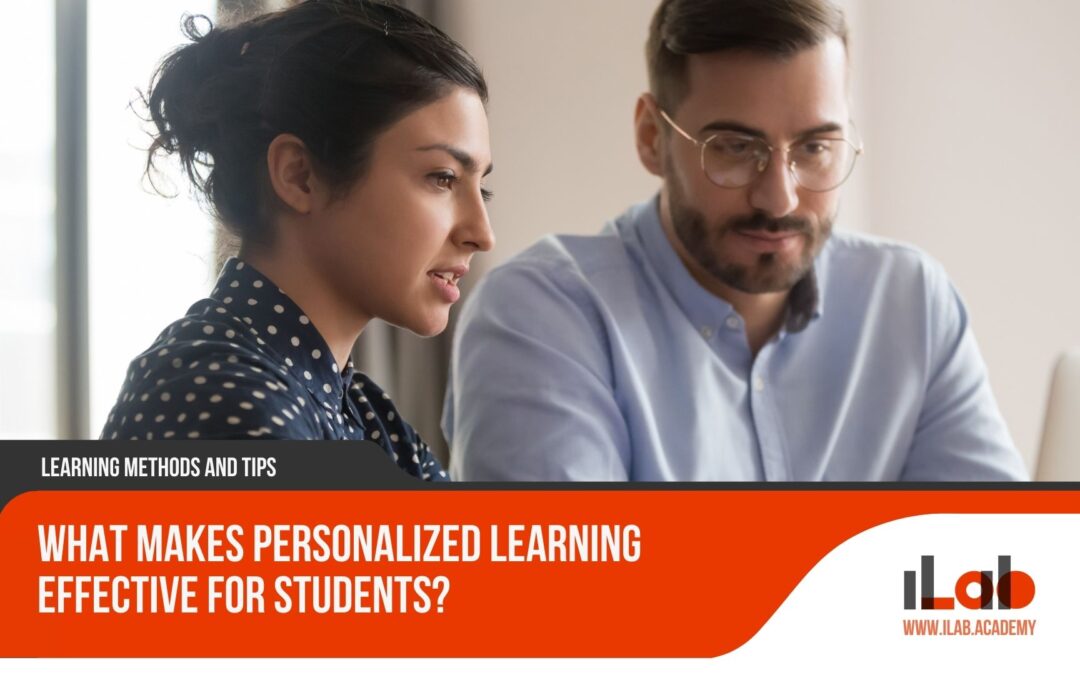Table of contents
In an era where cookie-cutter education models churn out scholars like a factory line, I’ve found solace in the bespoke world of customized one-on-one learning. It’s here, in the quiet corners of individualized education, that I’ve seen learning transform. As a student and a tutor, I’ve experienced firsthand how tailored sessions cater to my unique needs and goals. It’s not just about following a curriculum; it’s about shaping it to fit like a glove. I dive into topics at my own pace, ask questions without the fear of judgment, and receive feedback that’s actually about me, not just anyone in a classroom. This article is a glimpse into my world, where every lesson is a brick in the foundation of my personal educational edifice.
Key Takeaways
- Customized one-on-one learning focuses on individual students’ goals and objectives, tailoring the educational approach to their specific needs and preferences.
- Dynamic lesson planning plays a crucial role in customized one-on-one learning, adapting to the student’s progress, learning style, strengths, and areas of difficulty.
- Customized one-on-one learning allows for adaptable pacing, where the speed of the lesson is determined by the student’s understanding and comfort level, leading to a more thorough understanding of material and less stress.
- Personalized feedback and assessment are essential in one-on-one learning, providing continuous guidance and addressing immediate concerns to support the student’s specific learning process.
Individualized Learning Goals and Objectives
I’ve observed that the heart of customized one-on-one learning is the careful crafting of each student’s individual learning goals and objectives. This personalized approach begins with a blend of self-assessment by the student and a thorough evaluation by the teacher. It’s a collaborative process, where we identify the student’s strengths, weaknesses, and, importantly, their aspirations. The goals set aren’t one-size-fits-all; they’re as unique as the individuals themselves. For instance, while one student might aim to grasp the basics of a foreign language for travel, another might seek to master that language for professional purposes. Each objective dictates a different learning path.
As an educator, I find this aspect of teaching both challenging and rewarding. I’ve worked with students whose goals have ranged from acing a specific exam to simply gaining confidence in a subject. What’s clear is that when goals are tailored to the student, engagement skyrockets. The students aren’t just passively receiving information; they’re actively working towards milestones they’ve had a hand in setting. This sense of ownership over their learning fosters motivation and dedication.
Moreover, these individualized objectives often evolve over time. As I get to know a student’s learning style and they start to achieve their initial targets, we revisit and sometimes recalibrate their aims. This dynamic process ensures that the learning journey remains relevant and aligned with the student’s growth.
With each student’s unique set of goals clearly defined, the next step is the development of custom-tailored lesson plans that address these specific aims, taking into account the student’s learning style and preferences. This is where the true art of personalized education comes into play.
Custom-Tailored Lesson Plans
Often, I adapt lesson plans to mesh seamlessly with a student’s evolving needs, ensuring that every session is highly personalized and effective. This approach is crucial because it recognizes that learning isn’t a one-size-fits-all process. By customizing lesson plans, I can cater to a student’s specific goals, learning style, and areas where they may struggle or excel. It’s like crafting a key that fits perfectly into the unique lock of a student’s mind, unlocking their potential.
To give you a clearer picture of what these lesson plans might entail, here is a table that breaks down the components of a custom-tailored lesson:
| Aspect | Customization Approach | Example |
|---|---|---|
| Learning Goals | Aligned with student’s personal objectives | Mastering conversational Spanish |
| Content Delivery | Tailored to student’s preferred learning style | Visual aids for a visual learner |
| Pace | Adjusted to the student’s comprehension speed | Slower introduction to complex grammar rules |
| Feedback & Assessment | Personalized to provide relevant and constructive feedback | Custom quizzes focusing on weak areas |
| Engagement | Activities and materials that resonate with the student’s interests | Incorporating Spanish music for an audiophile |
By aligning each component with the student’s needs, I ensure that they are not just passively receiving information but are actively engaged in a process that resonates with them. This individualized attention not only helps in grasping the subject matter but also in fostering a love for learning.
As the student progresses, I’m also mindful of the pace at which we move through the material, which is a perfect segue into the next section about ‘adaptive pacing and scheduling’.
Adaptive Pacing and Scheduling
Every student learns at their own pace, and in one-on-one learning, I adjust the speed of our lessons to match their unique rate of comprehension. This customizable aspect of private education is foundational. It allows me to fine-tune each session according to how quickly or slowly a student grasps new concepts. If a student is breezing through a topic, we can accelerate accordingly, ensuring they remain engaged and challenged. Conversely, if they’re struggling, I can slow things down, providing more extensive explanations, practice, and support without the pressure of a rigid curriculum.
This adaptive pacing is crucial because it leads to a deeper understanding of the material. It acknowledges that not all brains process information in the same way or at the same speed. By aligning the pace with the student’s natural rhythm, I’m able to foster a stress-free learning environment that’s conducive to long-term retention and mastery.
But pacing is just one piece of the puzzle. Scheduling flexibility is another significant benefit of one-on-one learning. I work with students to find times that fit seamlessly into their lives, considering their extracurricular activities, family commitments, and optimal times of day for learning. This tailored approach respects the student’s lifestyle and maximizes their ability to focus and absorb information during our sessions.
Moving forward, just as the pacing and scheduling are personalized, so too is the feedback and assessment. This ensures that every aspect of the learning experience is crafted to support the student’s individual journey. Let’s explore how personalized feedback and assessment play a pivotal role in refining the educational process.
Personalized Feedback and Assessment
In one-on-one learning, I utilize personalized feedback and assessment as key tools to ensure each student’s progress is closely monitored and guided. This individualized approach allows me to address their unique needs and learning styles directly. Rather than generic comments, I offer specific insights that resonate with the student’s current challenges and achievements.
Continuous, Customized Feedback:
- I observe and interact with the student throughout our sessions, providing immediate and relevant feedback.
This feedback is tailored to:
- Encourage strengths and areas of improvement
- Suggest strategies for tackling difficult concepts
- The result is a supportive learning environment where the student feels valued and understood.
Varied Personalized Assessments:
- I design assessments that match the student’s learning goals and preferences.
These assessments come in various forms, such as:
- Verbal quizzes during lessons to gauge understanding
- Customized homework assignments that reinforce the day’s material
- Such assessments not only measure progress but also infuse confidence as students tackle challenges suited to their abilities.
This ongoing assessment cycle ensures that I’m not just teaching, but also learning about my students. It’s about pinpointing what works and what doesn’t, and then adjusting my methods accordingly. It’s a dynamic process that keeps both the student and me actively engaged in the pursuit of their educational goals. By providing personalized feedback and assessment, I’m not just monitoring their progress; I’m part of their learning journey, every step of the way.
Direct Teacher-Student Interactions
While I work closely with my students, I’ve found that the direct interactions we share are fundamental to tailoring the educational experience to their individual needs. These one-on-one moments allow me to perceive nuances in their understanding, adjust the pace of our lessons, and provide immediate and effective feedback. I’ve discovered that a dynamic interaction is crucial for maintaining student engagement and ensuring that concepts are not just learned but truly comprehended.
In a customized learning environment, every question a student poses is an opportunity to deepen their understanding. Similarly, each of their responses is a chance for me to identify misunderstandings and immediately clarify them. This real-time adjustment is what sets one-on-one learning apart; it’s a dance of communication and insight that continuously evolves to meet the learner’s needs.
To paint a clearer picture, consider the following table, which contrasts the direct interactions in one-on-one settings with those in traditional classroom environments:
| One-on-One Learning | Traditional Classroom |
|---|---|
| Immediate feedback and adjustments | Feedback often delayed |
| Tailored to individual student’s pace | Standardized pacing for the group |
| Deep understanding of student’s needs | Surface-level understanding due to group size |
These direct interactions foster a profound connection between teacher and student, one that is built on trust and a mutual commitment to the student’s educational journey. As we delve deeper into these personalized learning experiences, it’s crucial to consider the role of technology in customization. Technology holds the potential to further individualize learning, providing tools that can adapt to and enhance each student’s experience.
Role of Technology in Customization
I’ve observed that numerous technological tools can significantly refine the customization of one-on-one learning experiences. With a tap or a click, educators can now tailor their teaching methods and materials to suit the unique needs of every learner. Here’s how these digital wonders make a real difference:
Educational Software
- Interactive Programs: Adapt to the student’s responses, ensuring that every challenge is just right for their current level.
- Analytics Tools: Track progress over time, providing insights that help adjust the learning path.
Immersive Technologies
- Virtual Reality (VR): Creates simulated environments for safe, experiential learning.
- Augmented Reality (AR): Overlays digital information onto the real world, enriching the learning experience.
Technology isn’t just a fancy addition; it’s a game-changer. It enables learning to be more dynamic and engaging, transforming traditional methods into interactive journeys. For instance, when I use educational software, I can immediately identify which concepts my students grasp quickly and which ones require more attention. It’s like having a GPS for their educational journey, constantly recalibrating the route based on real-time data.
Moreover, immersive tech like VR can transport students to ancient Rome or inside a human cell, making abstract concepts tangible. This isn’t just engaging; it’s impactful. It leads to those “aha!” moments that we, as educators, live for. And the best part? It caters to the individual’s learning style, making the information stick.
In essence, when I leverage technology in one-on-one learning, I’m not just teaching; I’m providing a personalized learning adventure. It’s this tailored approach that can turn a routine lesson into a lifelong passion.
Long-term Development and Relationship Building
Fostering deep connections through personalized education, I’ve seen firsthand how the tutor-student relationship can blossom into a powerful catalyst for long-term development. As a facilitator of customized one-on-one learning, my objective goes beyond imparting knowledge; it’s about nurturing a dynamic where students feel seen, heard, and encouraged to grow. This relationship-building is not a byproduct—it’s a deliberate process that intertwines with academic progress, creating a foundation for the student to develop not just skills, but also self-confidence and a passion for learning.
In my practice, I’ve observed that when students perceive their tutors as mentors, they’re more likely to take intellectual risks and push their boundaries. This trust evolves over time, with consistent support and personalized attention that recognizes their unique strengths and challenges. It’s a partnership where milestones are celebrated, setbacks are navigated together, and the ultimate goal is the student’s holistic development.
The impact of such a relationship extends far beyond the immediate learning objectives. Students cultivate lifelong learning habits, an invaluable asset in an ever-changing world. They learn to approach problems with a critical eye, ask insightful questions, and develop a sense of resilience that serves them in all areas of life. It’s a profound transformation that starts with tailored lesson plans and one-on-one interactions but grows into a deep-rooted confidence and curiosity.
Ultimately, the bond formed through personalized education is about empowering students to become the architects of their own educational journey. It’s their path, their pace, and their passions that guide the way, with the tutor there to illuminate the road ahead.
Frequently Asked Questions
How Can Parents Be Involved in the Customized One-On-One Learning Process to Support Their Child’s Progress?
I believe parents play a crucial role in supporting their child’s one-on-one learning. They can keep in touch with the tutor, track progress, and ensure their kid’s goals align with the lessons. By providing encouragement and a conducive home learning environment, they boost their child’s confidence and focus. Regular feedback exchanges with the educator also help tweak the learning plan to better suit their child’s evolving needs.
What Measures Are Taken to Ensure the Student’s Privacy and Data Protection in a Customized One-On-One Learning Environment, Particularly When Using Digital Tools?
In my teaching, I prioritize my students’ privacy, especially when integrating tech into our lessons. I use secure platforms and always obtain consent before storing any personal data. I’m careful to ensure the digital tools we use comply with data protection laws, and I regularly update my privacy protocols. It’s crucial for me to maintain trust by safeguarding their information while providing a safe, personalized learning experience.
How Does Customized One-On-One Learning Handle the Potential for Over-Dependence on the Tutor, Ensuring Students Develop Independent Learning Skills?
I tackle over-dependence in my one-on-one teaching by gradually fostering students’ independent learning skills. I’ll start with guided exercises, then encourage them to tackle problems solo. I provide tools and strategies for self-study, ensuring they’re not always leaning on me. My aim is to build their confidence and ability to learn autonomously, preparing them for future challenges without needing my constant input. It’s all about striking that balance.
What Are the Financial Implications of Customized One-On-One Learning Compared to Traditional Classroom Education, and Are There Affordable Options Available?
I’ve been exploring the costs of personalized tutoring and it’s clear that it generally costs more than traditional classes. However, I’ve found that there are affordable options, like online platforms or group rates. It’s about balancing the benefits with the expense. For me, the tailored support and accelerated learning can justify the higher costs, especially when I think about long-term educational gains and the potential for a more engaging learning experience.
How Is the Effectiveness of Customized One-On-One Learning Evaluated Against Standardized Education Metrics, and What Success Indicators Should Parents and Students Look For?
I’m always questioning how well my one-on-one learning stacks up against traditional education. I look for clear success indicators like improved test scores or greater subject mastery. It’s crucial to see if the personalized approach really matches or even exceeds standard metrics. I’m on the lookout for tangible progress, like my ability to apply knowledge in real-world scenarios, which reassures me that my tailored education is truly effective.
Conclusion
In my experience, personalized one-on-one learning isn’t just effective, it’s transformative. By setting individual goals and tailoring lesson plans, I’ve seen students thrive at their own pace. Direct interaction and adaptive feedback foster a deeper understanding, while technology enhances this bespoke approach. Most importantly, the bonds formed through this method aren’t just educational—they’re personal, paving the way for long-term growth. It’s clear to me that customization is the key to unlocking a learner’s full potential.














